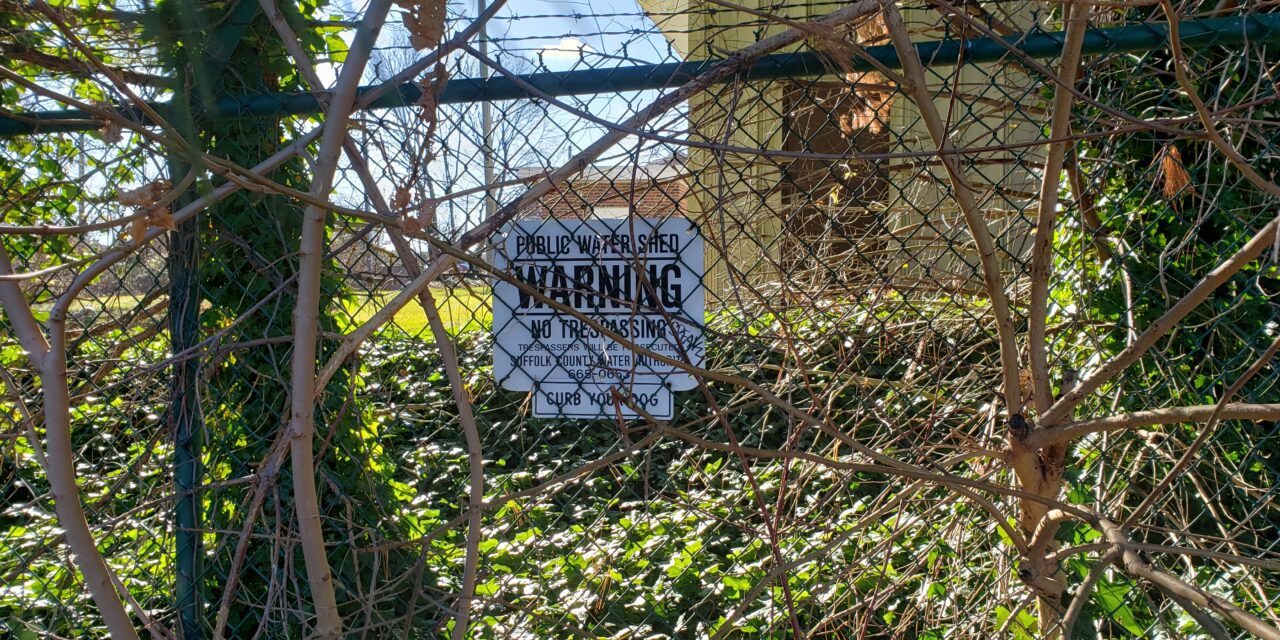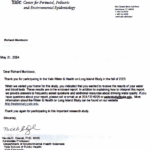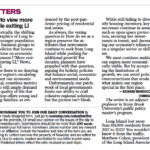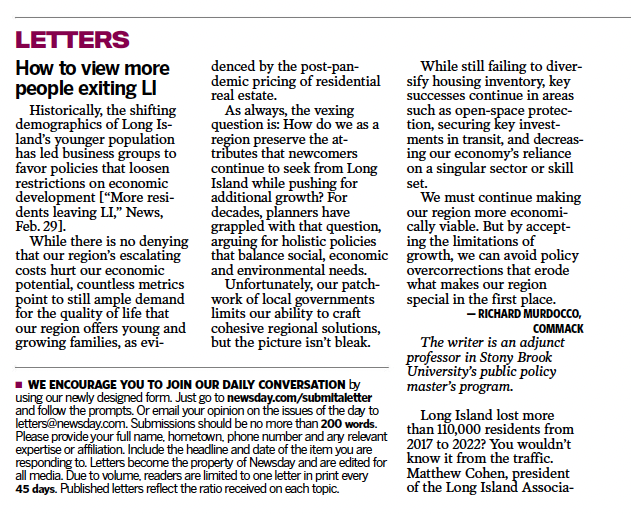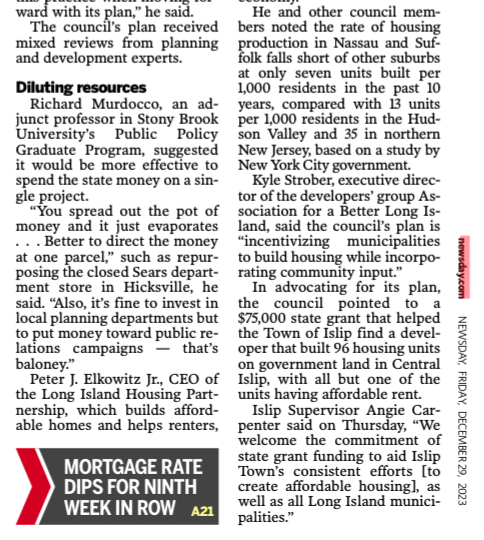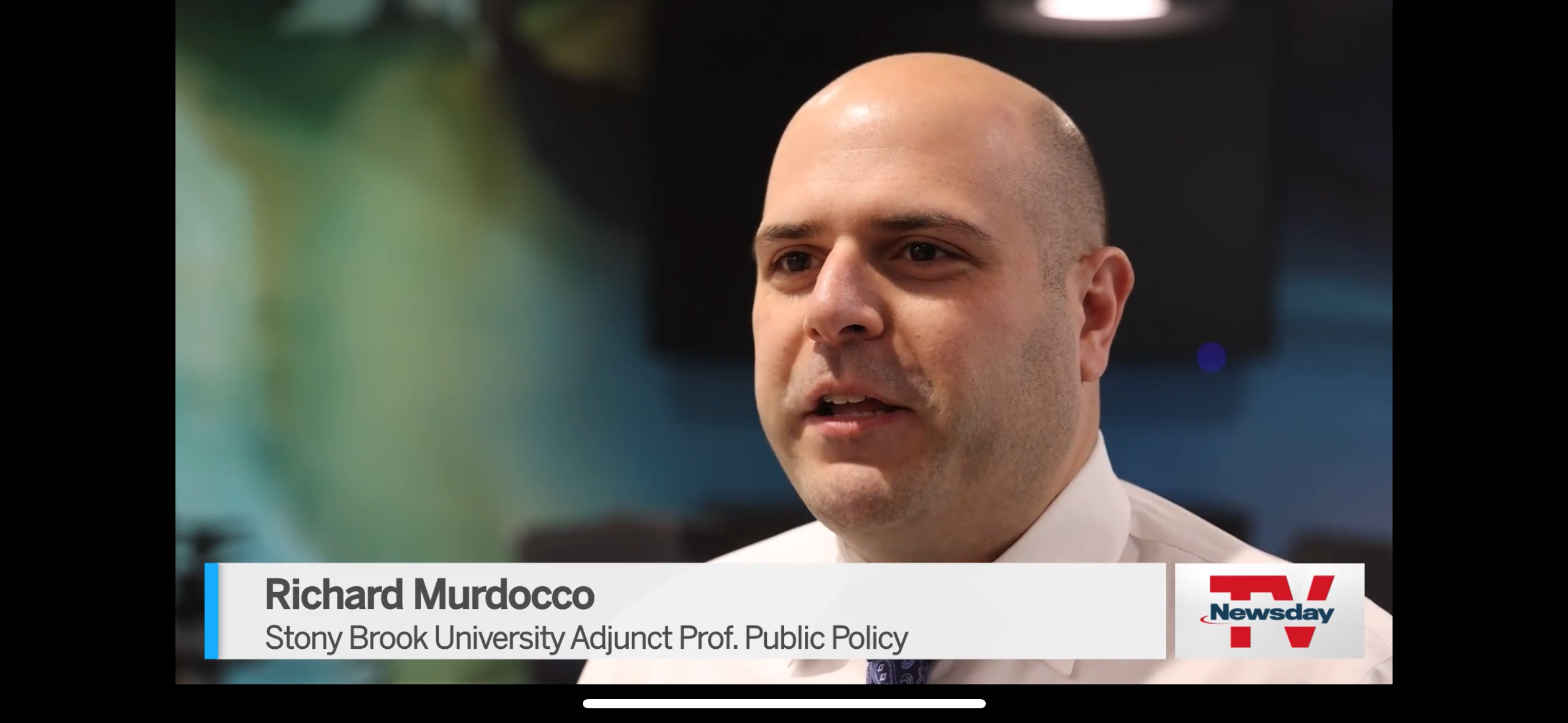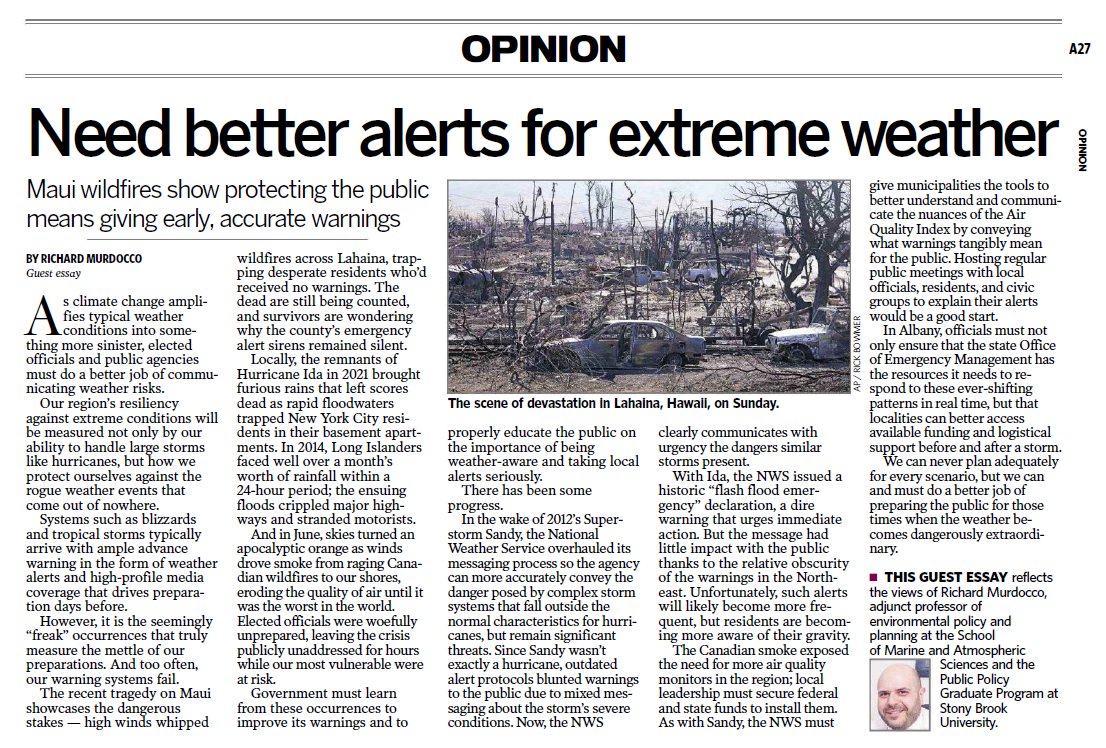The following was exclusively published by The Foggiest Idea on March 1st, 2021. Interested in supporting The Foggiest Idea’s award-winning reporting and analysis? Click here.
By Richard Murdocco
Some Suffolk County residents could be paying as much as $200 more per year at the tap if a County proposal to create a new water consumption charge that was floated last spring is officially enacted.
The recommendation, which was formally released last week, was part of a feasibility study to create a Countywide Wastewater Management District (CWMD) that Suffolk County authored back in May 2020 with little fanfare. The goal of the new district is to address the region’s longstanding serious water quality issues.
The proposed charge would either be based upon a customer’s water consumption, or it would take the form of a fixed rate that the county calls a single-family equivalent (SFE) unit. If the charge winds up being based on usage, then the pricing would be increased at a uniform rate per 1,000 gallons of billed water consumption. All property owners in Suffolk, regardless if they are hooked up to sewers, would pay the fees.

Pictured: The feasibility study makes a firm recommendation for new fees to pay for septic upgrades. The proposed fees would either be fixed or tied to water use. (Photo Source: Page E-6 of the CWMD Feasibility Study, Suffolk County)
Many stakeholders had a hand in shaping Suffolk’s study, including the Long Island Builders Institute, the Suffolk County Water Authority, and The Nature Conservancy, among others. The study was funded by a grant from the New York State Department of Environmental Conservation and the Long Island Regional Planning Council. Establishing the district has been designated an “early action” item under the Long Island Nitrogen Action Plan (LINAP).
Proponents argue that setting up the CWMD is necessary to identify, evaluate and manage the wastewater infrastructure needed to improve groundwater and surface water quality on Long Island. The main priority is gradually replacing outdated cesspools and septic systems with what’s been called Innovative Alternative Onsite Wastewater Treatment Systems (I/A OWTS), which more effectively filter and treat nitrogen loadings from residential wastewater discharge. In Suffolk County, about 74%—or more than 360,000 homes—currently don’t have sewers.
“The completion of this study is an important next step in the ongoing effort to implement a long-term plan to address the lack of wastewater infrastructure that has harmed water quality and been a long-term drag on our economy for decades,” Suffolk County Executive Steve Bellone said in a press release announcing the study. ”Creation of the District will provide the administrative structure needed to facilitate an historic investment in wastewater infrastructure that will help to fuel the local economy, create thousands of jobs and allow for new investments in our downtown business districts.”
Typically when anything is proposed that involves price hikes on Long Island, it draws a tidal wave of attention. But this report sank like a stone. One reason for that lackluster response is that it came just as Gov. Andrew Cuomo had announced that COVID-related PAUSE restrictions in New York, which had shuttered businesses at the first peak of the pandemic, were about to be lifted because the number of new coronavirus cases had declined. The recommendations may have been simply overlooked by a pandemic-weary public trying to stay afloat.
What may make this proposal harder to swallow is that customers served by the Suffolk County Water Authority (SCWA) and other local providers paid higher-than-average water bills this past summer.
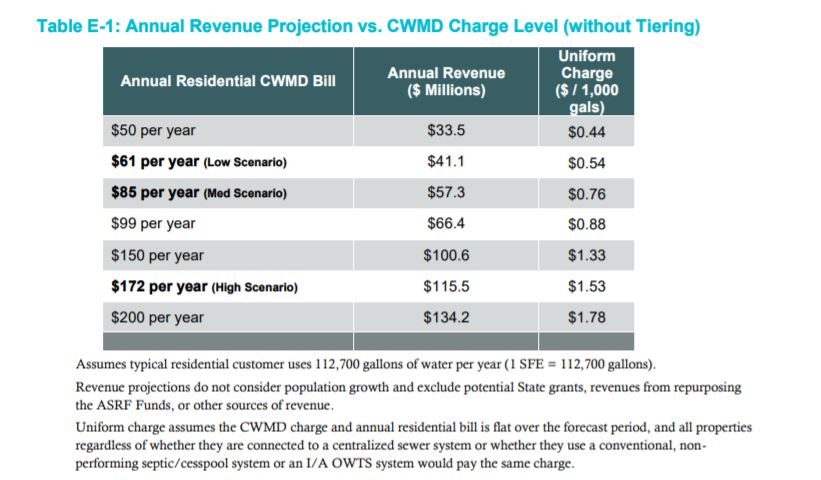
Pictured: An excerpt of the proposed water consumption charges being recommended by Suffolk County. (Photo Source: Suffolk County)
After a torrent of complaints and coverage in Newsday, SCWA Chief Executive Jeffrey Szabo explained that both a dry summer and a new conservation-rate tier were to blame.
According to reports, the SCWA instituted the conservation-rate tier system in 2019. The pricing formula was subsequently boosted yet another 5% in 2020. As a result, high-water users served by the SCWA are now charged a more expensive rate whenever their usage exceeds more than 73,000 gallons a year. “Our water bill tripled,” one resident vented on social media about their September water bill from the SCWA. “Something’s not right.”
Consumption isn’t the only reason water prices are rising across Long Island: the costs of cleanup are compounding the issue as well.
On the North Fork, SCWA customers now pay an extra $20 on their bills to offset the costs of remediating the area’s contaminated aquifer. According to SCWA, those fees will pay for 56 new advanced systems that will help to remove the contaminants 1,4-dioxane, PFOS and PFOA from the water supply. All three chemicals have increasingly been detected in Long Island’s groundwater, worrying suppliers and galvanizing New York State to take legislative action. In July, NYS established the country’s first-ever drinking water standard for 1,4-Dioxane at one part per billion.
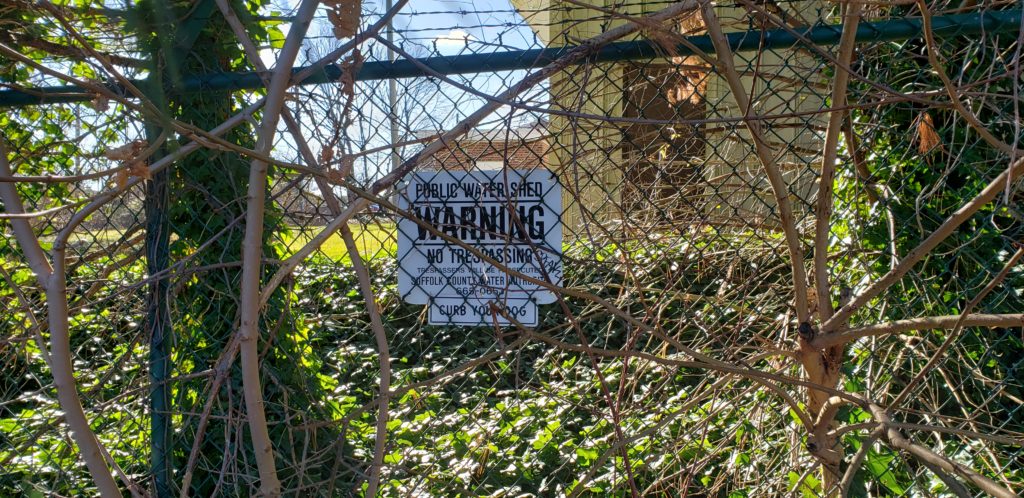
Pictured: A Suffolk County Water Authority property in Commack, NY. Some SCWA Customers have seen their water bills more than double after a conservation rate structure was enacted that charges users more per gallon. A newly proposed fee from the county would further increase water prices. (Photo Source: Richard Murdocco/The Foggiest Idea)
The question now is what comes next—and whether or not the public will be engaged with the process moving forward.
The tail end of the feasibility study outlines a loose communications strategy that involves sending targeted mailings to Suffolk households as well as holding quarterly community meetings on the matter, but no firm timeline on public outreach was suggested. As part of the outreach effort, the report stressed the need for publishing supportive op-eds in local media to support the CWMD and drafting question-and-answer templates for policymakers and elected officials to use.
The bill has finally come due for the septic issue because policymakers of the past put off addressing it for so long. Everyone can agree that improving water quality guarantees a good future for Long Island.
But what will people pay to keep up with the flow?
If county residents don’t want to go along, then Suffolk might as well flush that CWMD idea down the toilet.
Richard Murdocco is an award-winning columnist and adjunct professor in Stony Brook University’s public policy graduate program. He regularly writes and speaks about Long Island’s real estate development issues. Follow him on Twitter @thefoggiestidea. You can email Murdocco at Rich@TheFoggiestIdea.org.

